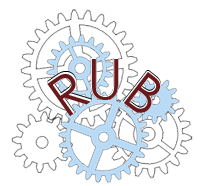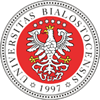Proszę używać tego identyfikatora do cytowań lub wstaw link do tej pozycji:
http://hdl.handle.net/11320/18336Pełny rekord metadanych
| Pole DC | Wartość | Język |
|---|---|---|
| dc.contributor.author | Zielińska, Joanna Bogna | - |
| dc.date.accessioned | 2025-07-03T11:04:09Z | - |
| dc.date.available | 2025-07-03T11:04:09Z | - |
| dc.date.issued | 2024 | - |
| dc.identifier.citation | Studia Sieci Uniwersytetów Pogranicza, T. 8, 2024, s. 308-326 | pl |
| dc.identifier.issn | 2544-5790 | - |
| dc.identifier.uri | http://hdl.handle.net/11320/18336 | - |
| dc.description.abstract | Goal – The aim of the paper is to evaluate the diversity of EU member states in terms of technological competitiveness in 2019 and 2022 and to assess relationships between technological competitiveness and eco-innovativeness. Three research questions were developed: did technological competitiveness deteriorate due to pandemic? Does technological competitiveness influence eco-innovativeness of EU countries? Do external or internal sources of technological competitiveness contribute to the higher level of eco-innovativeness? Research methodology – Hellwig’s method was used to rank EU countries on their technological competitiveness with division to classes of objects with similar features. Relationship between technological competitiveness and eco-innovativeness was researched with the use of Spearman’s correlation coefficient and the influence of technological competitiveness’ single variables on eco-innovativeness was assessed. Score/results – The technological competitiveness of EU member states remains below the average level, but it has improved in the analysed period. A strong positive relationship between technological competitiveness and eco-innovations in 2019 has decreased to a moderate level in 2022. A strong correlation was found between patent applications to the EPO and the level of eco-innovativeness of EU countries. Originality/value – The originality of paper is represented by the chosen research method and the set of diagnostic variables. The value of the research results is associated with identifying features fostering eco-innovativeness which can be strengthened by innovation policy. | pl |
| dc.language.iso | en | pl |
| dc.publisher | Wydawnictwo Uniwersytetu w Białymstoku | pl |
| dc.subject | technological competitiveness | pl |
| dc.subject | eco-innovation | pl |
| dc.subject | European Union | pl |
| dc.subject | Hellwig’s method | pl |
| dc.title | The Diversity of EU Member States in Terms of Technological Competitiveness in 2019 and 2022 | pl |
| dc.type | Article | pl |
| dc.rights.holder | © Copyright by Uniwersytet w Białymstoku, Białystok 2024 | pl |
| dc.identifier.doi | 10.15290/sup.2024.08.21 | - |
| dc.description.Email | j.zielinska@uwb.edu.pl | pl |
| dc.description.Affiliation | University of Bialystok | pl |
| dc.description.references | Aiginger K., Bärenthaler-Sieber S., Vogel J., 2013, Competitiveness under New Perspectives, WWW for Europe Working Paper, No 44, WIFO, Vienna, DOI: 10.13140/RG.2.1.1003.1525. | pl |
| dc.description.references | Aiginger K., Vogel J., 2015, Competitiveness: From a Misleading Concept to a Strategy Supporting beyond GDP Goals, “Competitiveness Review”, Vol. 25 Issue 5, DOI: 497–523, DOI: 10.1108/CR-06-2015-0052. | pl |
| dc.description.references | Álvarez-Aros E.L., Bernal-Torres C.A., 2021, Technological Competitiveness and Emerging Technologies in Industry 4.0 and Industry 5.0, “Annals of the Brazilian Academy of Sciences”, No. 93(1), DOI: 10.1590/0001-3765202120191290. | pl |
| dc.description.references | Bąk A., 2016, Porządkowanie liniowe obiektów metodą Hellwiga i TOPSIS – analiza porównawcza, “Prace Naukowe Uniwersytetu Ekonomicznego We Wrocławiu”, No. 426, DOI: 10.15611/pn.2016.426.02. | pl |
| dc.description.references | Bierut B.K., Kuziemska-Pawlak K., 2016, Competitiveness and Export Performance of CEE Countries, “NBP Working Paper”, No. 248. | pl |
| dc.description.references | Cheba K., Szopik-Depczyńska K., 2019, Sustainable Competitiveness and Responsible Innovations – The Case of the European Union Countries, “Prace Naukowe Uniwersytetu Ekonomicznego we Wrocławiu = Research Papers of Wrocław University of Economics”, Vol. 63, No. 6, DOI: 10.15611/pn.2019.6.11. | pl |
| dc.description.references | Cheba K., Bąk I., Szopik-Depczyńska K., 2020, Sustainable Competitiveness as a New Economic Category: Definition and Measurement Assessment, “Technological and Economic Development of Economy”, No. 26(6), DOI: 10.3846/tede.2020.13528. | pl |
| dc.description.references | Diaconu M., 2011, Technological Innovation: Concept, Process, Typology and Implications in the Economy, “Theoretical and Applied Economics”, Vol. XVIII, No. 10(563). | pl |
| dc.description.references | Eco-Innovation Observatory, Eco-Innovation Observatory: Methodological Report, funded by the European Commission, DG Environment, Brussels 2010. | pl |
| dc.description.references | European Commission, 2024, EU Eco-Innovation Index 2024, Brussels, pp. 1–27. | pl |
| dc.description.references | Hajdukiewicz A., Pera B., 2023, Eco-Innovation in the European Union: Challenges for Catching-Up Economies, “Entrepreneurial Business and Economics Review”, No. 11(1), DOI: 10.15678/EBER.2023.110108. | pl |
| dc.description.references | Matyushenko I., Trofimchenko K., Ryeznikov V., Prokopenko O., Hlibko S., and Krykhtina Y., 2021, Assessment of Technological Competitiveness of Ukraine in Terms of Association with the EU, “Economic Studies”, No. 30(7). | pl |
| dc.description.references | Molendowski E., Nawracaj-Grygiel K., Ulbrych M., 2024, Konkurencyjność technologiczna przetwórstwa przemysłowego krajów Grupy Wyszehradzkiej: główne tendencje w latach 2011–2021, “Przegląd Europejski – European Studies Quarterly”, Vol. 2024, No. 1, DOI: 10.31338/1641-2478pe.1.24.1. | pl |
| dc.description.references | Ostraszewska Z., Tylec A., 2019, Eco-Innovation: the Profile of Poland in Comparison to the European Union, “Global Journal of Environmental Science and Management”, No. 5(51), DOI: 10.22034/gjesm.2019.SI.23. | pl |
| dc.description.references | Porter M.E., 2008, On Competition, Boston. | pl |
| dc.description.references | Roszkowska E., Filipowicz-Chomko M., Łyczkowska-Hanćkowiak A., Majewska E., 2024, Extended Hellwig’s Method Utilizing Entropy-Based Weights and Mahalanobis Distance: Applications in Evaluating Sustainable Development in the Education Area, “Entropy (Basel)”, No. 26(3), DOI: 10.3390/e26030197. | pl |
| dc.description.references | Saura J.R., Skare M., Riberio-Navarrete S., 2022, How Does Technology Enable Competitive Advantage? Reviewing State of the Art and Outlining Future Directions, “Journal of Competitiveness”, No. 14(4), DOI: 10.7441/joc.2022.04.10. | pl |
| dc.description.references | Skrodzka I., 2016, The Synthetic Measure of the Level of Smart Growth in the European Union Countries, “Optimum. Studia Ekonomiczne”, No. 5(83), DOI: 10.15290/ose.2016.05.83.07. | pl |
| dc.description.references | Tomala J., Urbaniec M., 2021, Eco-Innovation Development in Selected European and Asian Countries: a Comparative Analysis, “Ekonomia i Środowisko”, No. 4(79), DOI: 10.34659/2021/4/28. | pl |
| dc.description.references | Urbaniec M., 2015, Towards Sustainable Development through Eco-Innovations: Drivers and Barriers in Poland, “Economics and Sociology”, Vol. 8, No. 4, DOI: 10.14254/2071-789X.2015/8-4/13. | pl |
| dc.description.references | Weresa M.A., 2019, Technological Competitiveness of the EU Member States in the Era of the Fourth Industrial Revolution, “Economics and Business Review”, Vol. 5(19), No. 3, DOI: 10.18559/ebr.2019.3.4. | pl |
| dc.description.references | Wosiek R., 2019, Konkurencyjność technologiczna polskiej gospodarki. Stan obecny i perspektywy zmian, “Nierówności Społeczne a Wzrost Gospodarczy”, No. 1(57), DOI: 10.15584/nsawg.2019.1.15. | pl |
| dc.description.references | Woźnicki A., Gawlik R., 2024, Measuring the Technological Competitiveness of Economies with the PTCE Method: PRC vs. USA 2000–2020, “Technological and Economic Development of Economy”, No. 30(5), DOI: 10.3846/tede.2024.21520. | pl |
| dc.description.references | Yoon W., Kwon S., 2023, The Impact of Technological and Non-Technological Innovative Activities on Technological Competitiveness, “Journal of the Knowledge Economy”, No. 14, DOI: 10.1007/s13132-021-00868-w. | pl |
| dc.description.references | Zargartalebi M., 2021, Sustainability as a Competitiveness Factor: A Quantitative Cross-Country Analysis, “Ekonomia i Środowisko”, No. 1(76), DOI: 10.34659/2021/1/4. | pl |
| dc.description.references | Zielińska J.B., 2018, Technological Competitiveness and Export Performance of Visegrad Group Countries in 2004–2016, [in:] H. Ribeiro, D. Naletina, A. Lorga da Silva (ed.), Economic and Social Development (Book of Proceedings), 35th International Scientific Conference on Economic and Social Development – “Sustainability from an Economic and Social Perspective”, Varazdin Development and Entrepreneurship Agency and others, Lisbon. | pl |
| dc.description.volume | 8 | pl |
| dc.description.firstpage | 308 | pl |
| dc.description.lastpage | 326 | pl |
| dc.identifier.citation2 | Studia Sieci Uniwersytetów Pogranicza | pl |
| dc.identifier.orcid | 0000-0001-8193-5462 | - |
| Występuje w kolekcji(ach): | Artykuły naukowe (WEiF) Studia Sieci Uniwersytetów Pogranicza, 2024, tom 8 | |
Pliki w tej pozycji:
| Plik | Opis | Rozmiar | Format | |
|---|---|---|---|---|
| SUP_8_2024_JB_Zielinska_The_Diversity_of_EU_Member_States.pdf | 341,7 kB | Adobe PDF | Otwórz |
Pozycja jest chroniona prawem autorskim (Copyright © Wszelkie prawa zastrzeżone)

